Corvette: C4 vs. C5
With the introduction of every new generation of Corvette, discussions begin as to which generation is better. More specifically, are the "changes" for the better or worse?
This article applies to the C4 (1984-1996) and C5 Corvette (1997-2004).
Although it’s often an amusing conversation, determining the “best” Corvette is simply a matter of individual preference and taste. In fact, it could best be argued that the most recently built Corvette is the best. The Corvette could not have survived for over 60 years as a world class sports car if the folks at GM weren’t constantly concerned with improvement. That being said, there are often changes made that spur debate among enthusiasts that often cannot be settled. In the end, the “powers that be” listen, and the Corvette continues to evolve, revise and improve. This can best be seen with each generation.
In 1984, the C4 Corvette, with its new chassis and sleek, evolved, modern styling, represented a distinct break from the previous 15 years of the third generation. After another 13 years, the 1997 Corvette introduced us to the next generation, the C5. It was again a long awaited change and, since engine and chassis components had been carried over from the second to third generation, it was actually only the second major revision for the Corvette since the introduction of the C2 in 1963. Although few questioned the methods and motives when the C4 was introduced, and although the auto world hailed the C5 as an “instant sensation,” a debate raged among many Corvette enthusiasts that had never been seen before.
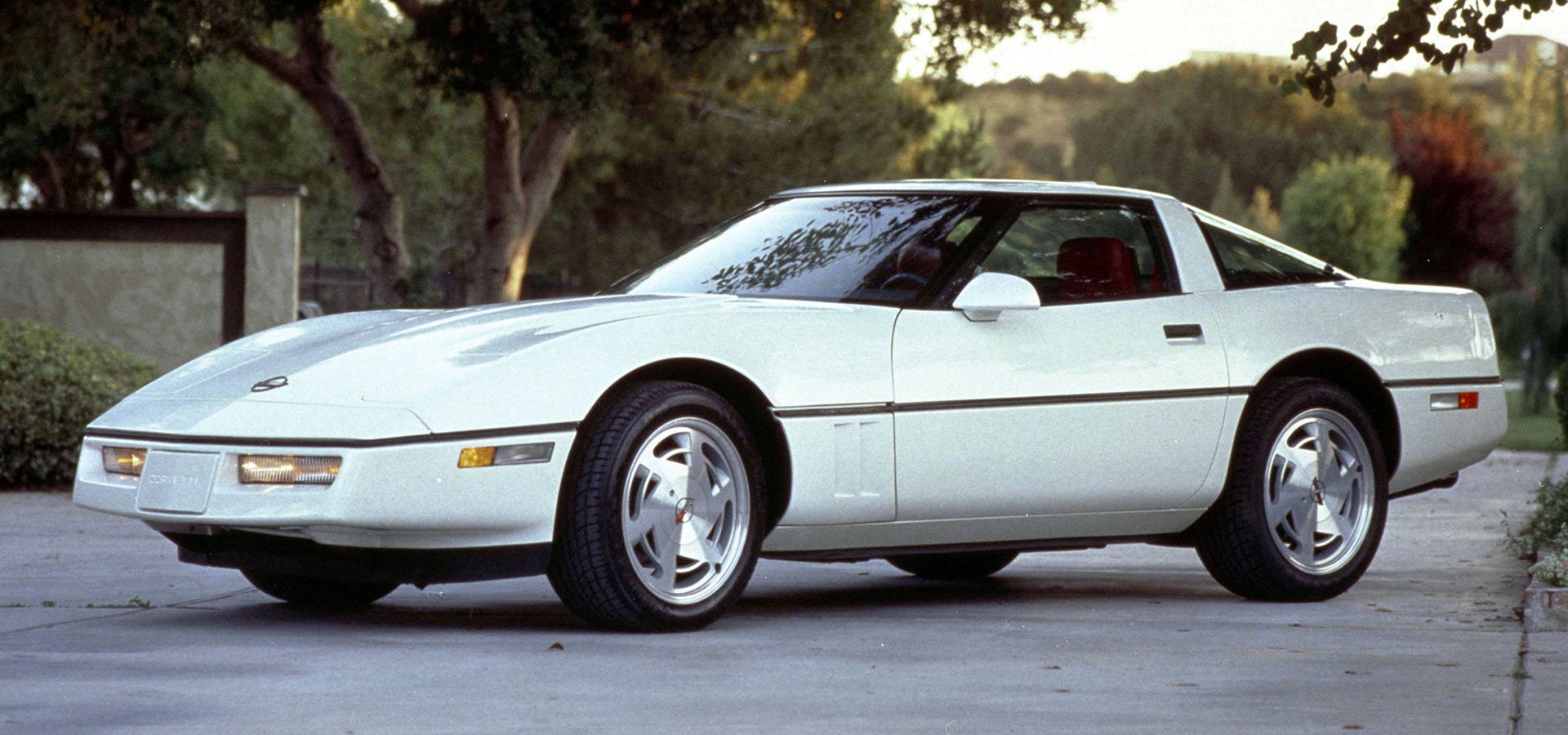
Figure 1. C4 Corvette. 
Figure 2. C5 Corvette.
The Foundation
Unlike previous generations, the C4 did not incorporate “body-on frame” construction. Instead it was built around what GM called a “uniframe.” This uniframe consisted of a perimeter frame as a base for an assembly that included the door posts, the windshield support structure, the halo and a portion of the floor pan. Because of this, tall side rails were necessary to maintain rigidity, and thus the door sills were quite deep. Many drivers felt that they were “falling in” to the car, only then having to “climb out” to exit. Yet, this “birdcage” design allowed engineers to incorporate components such as improved suspension and for the first time, rack-and-pinion steering, for greater handling precision which the C4 is well known for.
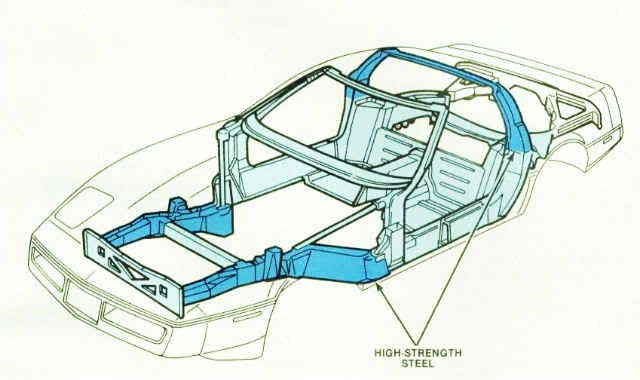
Also, instead of T-tops like the C3, the C4 employed a Targa top, thus there was no structural member tying the front windshield support to the halo. Despite a new suspension system using transverse leaf springs, the C4 had a stiff ride and was prone to flex and rattle. This was more evident when the Targa top was removed and even more so with the convertible when it was introduced in 1986.
GM learned from this, and when the C5 was designed, unlike the C4 it was designed from the ground up to be a convertible. Yet it was only available as a coupe upon its introduction, and the convertible didn’t return until the following year in 1998.
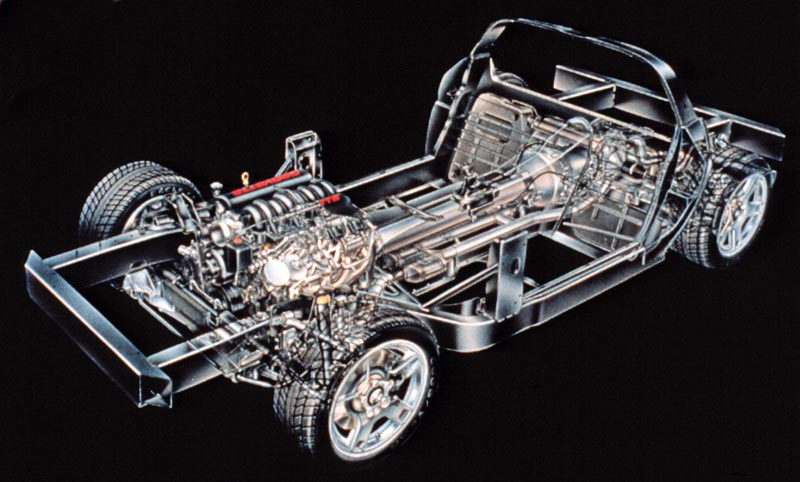
The C5 incorporated a “hydroformed” box frame. Combined with a thick backbone for added strength, the frame improved the structural rigidity issue. GM also utilized wood products to make up part of the floor. Using a lightweight material know as SMC (sheet molded composite), the engineers made a “composite sandwich” with Balsa wood in the middle. Balsa wood was chosen for its extreme stiffness, light weight and sound deadening qualities. Although originally criticized for being composed of inexpensive materials (to cut costs), the composite components have proven to be very reliable over the years. The C5 suspension still used the transverse leaf springs, but they were now much lighter and sat lower to give the C5 its distinctive ride height.
Powertrain/Drivetrain
Although the C4 was scheduled to debut in 1983, due to production issues the first C4 was introduced as a 1984 model. GM carried over the L83 engine and cross-fire fuel injection from the 1982 C3 for the first year of the new generation. In 1985, Corvettes were equipped with the new L98 engine and tuned port injection. Eventually, the C4 would be equipped with the LT1, but the high water mark came in 1990 (through 1995) when the LT5 (eventually producing 405 hp) was introduced in the ZR1. Often called the “King of the Hill,” the C4 ZR1, with its stunning acceleration and handling, is still one of the most sought after Corvettes today. Marking the end of C4 production, the Grand Sport hit the streets in 1996, and with its high performance LT4 engine (330 hp), it is also considered C4 at its best.

Initially, the C4 was equipped with a Doug Nash “4+3” manual transmission. This unusual transmission was basically a stout 4-speed that added overdrive at the top 3 gears. As the C4 evolved, it was eventually replaced with the ZF-6.
When the C5 was introduced in 1997, it was one of the most completely new Corvettes seen from generation to generation. Not only was there no carry over as previous generations had seen, the engine was totally unrelated to any Corvette engine. With the new C5, GM introduced the first of the Gen III aluminum engines, the LS1 (345 to 350 hp). Although well received, it wasn’t until the introduction of the LS6 in the 2001 ZO6 that the C5 achieved the performance of the C4 ZR1. Despite simply an equal power rating, the ZO6 was eventually able to out-match the performance of the C4 ZR1 with its improved rigidity, suspension, brakes and reduced weight.

Unlike previous Corvettes that had their transmission directly behind the engine, the C5 transmission was placed farther back. This integrated, rear-mounted transaxle assembly allowed weight to be distributed and offset the weight of the engine in the front, resulting in a near perfect 51:49 weight ratio. This was a radical departure for the Corvette; not only did it contribute to performance, it also allowed for more interior space.
Styling
After 15 years of the relatively unchanged style of the C3, few cars have been as highly anticipated as the C4 Corvette. Unlike in the past, when engineers and designers would clash over “form vs function,” the team behind the C4 partnered and cooperated to create the “new” Corvette. Together, they created a car that kept traditional Corvette styling cues, while integrating superior aerodynamics and incredible handling capabilities.
Although the C4 appeared bigger than its predecessors, the new Corvette was actually smaller in overall dimension. Although slightly wider due to the redesign of the “pinched-waist” mid-section of the C3 (thus allowing for more interior room), the overall length was reduced an impressive 8.8 inches despite only having a 2 inch shorter wheel base. The not only pleasing, but also functioning, aerodynamics contributed to this illusion. A long clam-shell hood, a 64-degree windshield angle (steepest at the time) as well as smooth side contours that were abruptly “cut-off” at the rear fascia created a “wedge” look that gave the C4 a “hunkered down” appearance.
The larger interior space was dominated by a futuristic instrument panel and tall center console. The instrument cluster was directly in front of the driver and consisted of a digital display complete with graphics for speed and RPM. The C4 was still a Corvette, but with all of this high technology, it was unlike any that had been seen before.
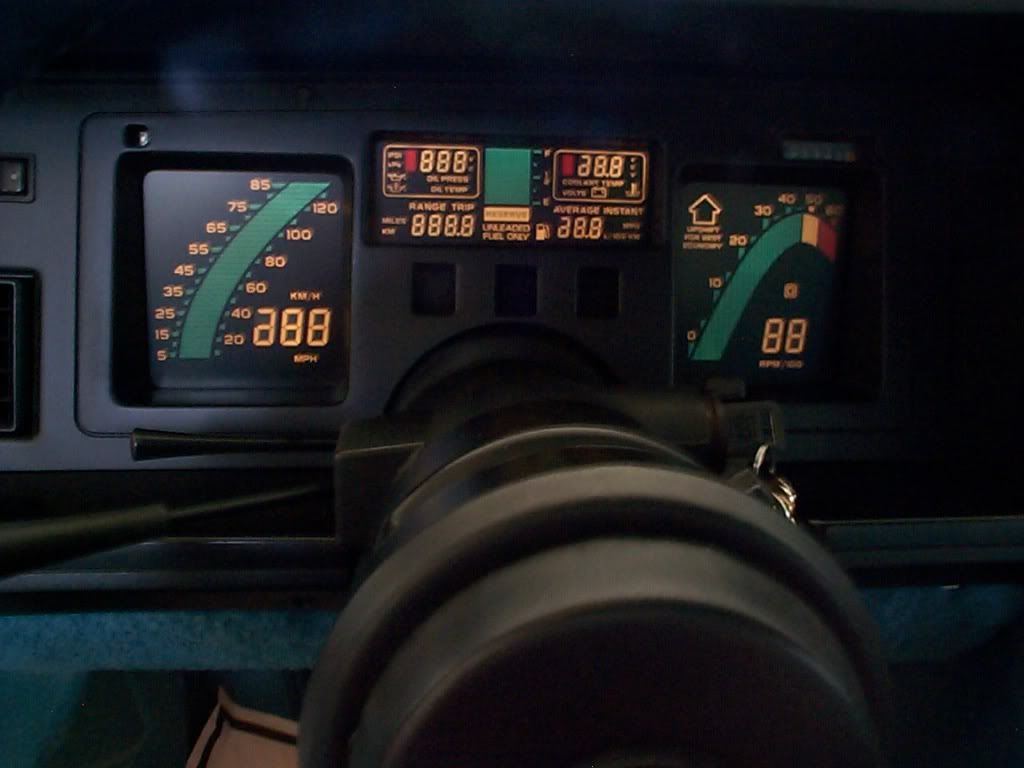
In the ‘90s, as the fourth generation was nearing the end of its run, a new team of designers and engineers, following the same “form and function” philosophy, set out to give the new C5 a fresh look, and even improve upon the world class aerodynamics of the C4. Evoking a more curvaceous design once again, the C5 brought back the stylized side cove reminiscent of the 1950s. Four “almost” round taillights kept the Corvette rear cue intact, yet the rear fascia was much larger. Many complained about this “overstated” rear end, and traditionalists smirked at the thought that it was merely done to accommodate a set of golf clubs. That may be part of it as GM was trying to appeal to a larger demographic, but the rear fascia also played a major role in improving aerodynamic characteristics. Although the C5 body was still made of fiberglass, it was much improved. It was not only highly crack-resistant, it also allowed for a smoother, almost blemish-free finish. Eventually, the C5 incorporated several carbon fiber parts. Along with the styling popularity that carbon fiber achieved, the weight reduction due to the incorporation of these parts resulted in performance gains.
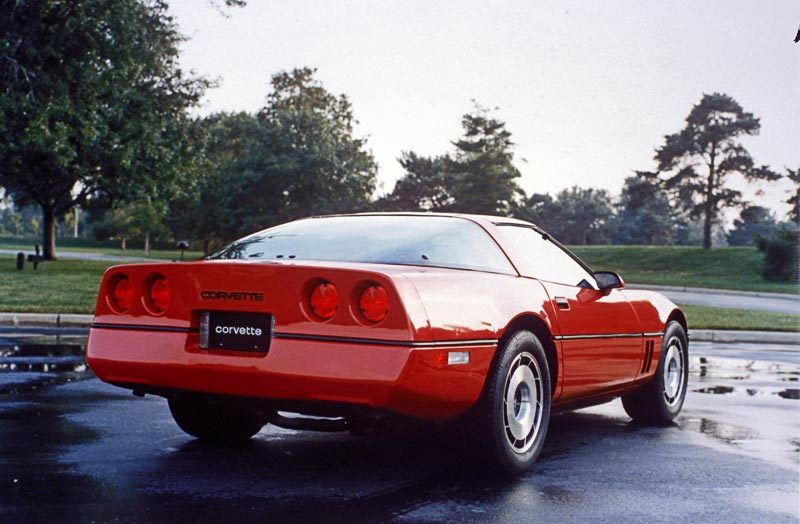
Figure 8. C4 rear fascia. 
Figure 9. C5 rear fascia.
The interior of the C5 is also more reminiscent of earlier models. Gone was the futuristic cluster of the C4. GM returned to “analog-style” instruments with unique black light illumination. It provided the driver with more information than ever before, all with sophisticated ergonomic design and delivery.
C4 or C5?
Both the C4 and the C5 represent the incredible forward-thinking achievements that we have come to expect from those that keep the Corvette alive and well. Although the Corvette continued to improve with the introduction of the C6 and now the C7, it cannot be said that the previous generations were not great cars. Taking a snapshot of the time, each new generation re-introduced the world to a cutting-edge American sports car, and that cannot be discarded as technology advances and refinements continue to be made.
The visuals of the C4 have not aged as well as the more contemporary styling of C5. But if you are looking for a "period" car that represents the quintessential expression of its time, the C4 is your time capsule. The C5 offers more in the way of timeless design, with a body that doesn't look dated too much beyond C6 and an interior with more modern instrumentation. Also, in terms of performance, the C5 is world's ahead of a C4 (unless you've managed to find a strong ZR-1 of the era to use). However, ask any true Corvette enthusiast and it's likely, given the opportunity, they’ll take at least one of each.
Related Discussions
- C4, C5, or C6? - CorvetteForum.com
- C4 or C5 Maintenance Costs - CorvetteForum.com
- C4 or C5? - CorvetteForum.com






